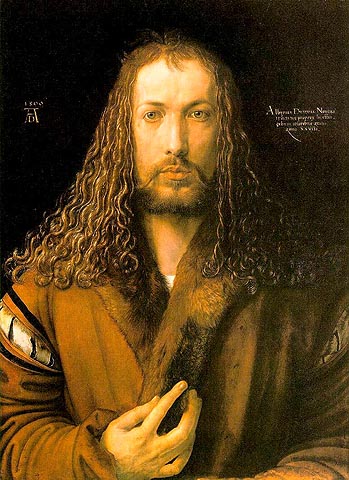 Some churches oppose the use of artistic representations of Jesus or the saints because they believe it violates the second commandment. Here is what Albrecht Durer had to say about that:
Some churches oppose the use of artistic representations of Jesus or the saints because they believe it violates the second commandment. Here is what Albrecht Durer had to say about that: "A Christian would no more be led to superstition by a picture or effigy than an honest man to commit murder because he carries a weapon by his side. He must indeed be an unthinking man who would worship picture, wood or stone. A picture therefore brings more good than harm, when it is honourably, artistically, and well made."
It seems Mr. Durer and I are in agreement on this point. Although he was an egomaniac, I have to admit he was a fantastic artist, and I loooooove his work. (This self-portrait is one of my favorite pieces... check out the detail.)


2 comments:
that has always been one of my favs too.
i am not sure durer's assessment of the situation was fair however. he lived some 600-700 ears AFTER the heydey of the iconographic cults in europe. sure, by his age (humanism, renaissance, barely pre-enlightenment) people were thinking beings capable of rational thought (on the large at least), but when icons really shredded up the faith was earlier when people were highly superstitious creatures that were just recently throwing off the yoke of pagan and decidedly UN-scientific explanations of the world. so it would make more sense that icons needed to be checked by the church in the pre-scientific, pre-rational era of the early medieval ages (i am talking about 500-900).
Yes, you make a good point. It is interesting to think back on times where humans were not concerned with rational or scientific thought-- it seems like such a natural part of life now (and even of religion... of course, no faith can be based entirely upon rationalism but think of how much rationalism has been integrated into the Christian faith since its inception.)
It's just strange to think about.
P.S. you never commented on whether or not you have read fugitives and refugees?
Post a Comment